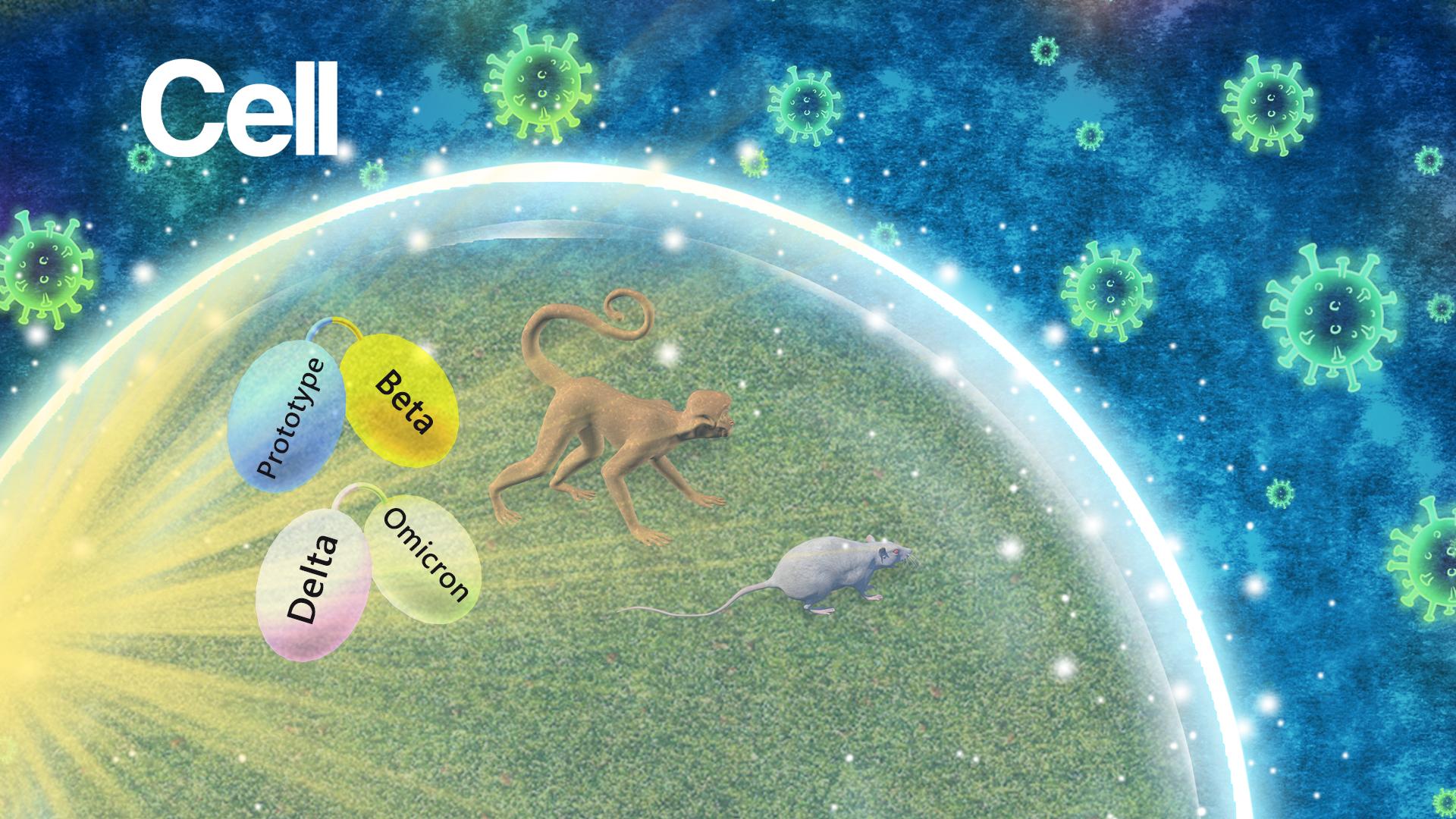Severe acute respiratory syndrome coronavirus 2 (SARS-CoV-2) variants are continually emerging and becoming the circulating strains in the world. Several highly transmissible variants of concern (VOCs) showed altered pathogenicity and transmission, bringing new waves of infection worldwide.
The immune escape of the variants to the currently approved vaccines and the breakthrough infections have become the global challenge to end the pandemic. Currently, all approved vaccines are based on prototype SARS-CoV-2. Given that the circulating strains of SARS-CoV-2 are fast-changing, it is debated in the field what vaccine strategy should be taken going forward.

Professor Peiyi Wang’s team at the Southern University of Science and Technology (SUSTech) and their collaborators have recently made groundbreaking progress in the COVID-19 vaccine. They have developed a chimeric RBD-dimer protein vaccine approach to adapt SARS-CoV-2 circulating variants, which was formed by the tandem connection of two heterotypic RBDs. Chimeric RBD-dimers elicit broader antibody responses to variants and provide better protection against various virus challenges in animals than homodimers.
Their research, entitled “Protective prototype-Beta and Delta-Omicron chimeric RBD-dimer vaccines against SARS-CoV-2,” was published in the Cell, a journal covering all aspects of experimental biology.
The researchers designed two chimeric RBD-dimers and demonstrated that the prototype-Beta chimeric vaccine conferred mice and rhesus macaques protection against several SARS-CoV-2 variants. The Delta-Omicron chimeric vaccine efficiently protected mice, preventing infection and pneumonia caused by the Delta and Omicron variants.
SARS-CoV-2 spike (S) protein is responsible for receptor recognition and membrane fusion. RBD of S protein is a key vaccine target and elicits neutralizing antibody responses, with the advantage of immunofocusing.
Previously, the research teams designed S protein RBD-dimer proteins using a betacoronavirus vaccine design strategy and demonstrated that the tandem SARS-CoV-2 RBD-dimer protein induced higher serological neutralizing antibody titers than those generated by an RBD-monomer protein.
Based on this concept, the COVID-19 recombinant protein subunit vaccine ZF2001 was developed by the Institute of Microbiology, Chinese Academy of Sciences (IMCAS), and Anhui Zhifei Longcom Biopharmaceutical Co. Ltd.
The results of Phase one and two clinical trials showed that ZF2001 was safe and immunogenic. The results of Phase three clinical trials showed that three doses of ZF2001 provided 81.43% efficacy against COVID-19 of any severity in people over 18 years old. In addition, the vaccine efficacy against COVID-19, including severe and critical disease cases, is 92.87%.
In March 2021, ZF2001 was granted emergency usage authorization in China and Uzbekistan and became the world’s first authorized COVID-19 recombinant protein vaccine. Up to now, Indonesia and Colombia have also approved the emergency usage authorization for ZF2001. In 2022, ZF2001 received conditional authorization and approval as a heterologous booster for inactivated COVID-19 vaccines in China. Because of the advantages of high yield, low reactogenicity, ease of transport and storage, etc., recombinant protein subunit vaccine was crucial for the prevention of COVID-19.
The COVID-19 pandemic still poses a great threat to public health worldwide. Following the emergence and circulation of SARS-CoV-2 variants, breakthrough infections occurred because of the escape of vaccine-induced humoral immune responses. In the last year, Delta and Omicron became the major circulating variants globally, posing a great challenge for pandemic control. Therefore, a vaccine inducing broader immune responses, with particularly high activity against the Omicron variant, is urgently needed.
In this study, Prof. Wang’s team and their collaborators developed a heterotypic RBD-dimer vaccine approach to adapt SARS-CoV-2 circulating variants based on the design of the licensed COVID-19 protein vaccine ZF2001 (prototype SARS-CoV-2 homotypic RBD-dimer).
A prototype-Beta chimeric RBD-dimer was first designed. Compared with its homotypic forms, the chimeric vaccine elicited broader sera neutralization of variants and conferred better protection in mice. The protection of the prototype-Beta chimeric vaccine against several SARS-CoV-2 variants was further verified in macaques. This approach was generalized to develop Delta-Omicron chimeric RBD-dimer to adapt to the current prevalent variants. Again, the Delta-Omicron chimeric vaccine elicited broader sera neutralization of SARS-CoV-2 variants and conferred better protection against challenges by either Delta or Omicron SARS-CoV-2 in mice, compared with prototype SARS-CoV-2 RBD-dimer vaccine.
This chimeric approach is applicable for rapid updating of immunogens, and the data supports the development of a variant-adapted multivalent vaccine against circulating and emerging variants. This study will contribute to the prevention of COVID-19, especially in the current circulating of the Omicron variant.
Kun Xu, Assistant Researcher at the Beijing Institutes of Life Science, Chinese Academy of Sciences (BIOLS, CAS); Ping Gao, a Ph.D. student at IMCAS; Sheng Liu, a postdoctoral fellow of the Cryo-EM Center at SUSTech; Prof. Shuaiyao Lu of the Institute of Medical Biology, Chinese Academy of Medical Sciences (IMBCAMS); Assoc. Prof. Wenwen Lei of the National Institute for Viral Disease Control and Prevention at the Chinese Center for Disease Control and Prevention (China CDC); and Tianyi Zheng, a Ph.D. student in the School of Medicine at Zhejiang University, are the co-first authors.
Prof. Peiyi Wang, Director of the Cryo-EM Center at SUSTech; Profs. George F. Gao and Lianpan Dai of IMCAS; Prof. Xiaozhong Peng of IMBCAMS; and Prof. Guizhen Wu, Chief Expert on Biosafety at the China CDC, are the corresponding authors.
This work was supported by the National Key R&D Program of China, National Natural Science Foundation of China (NSFC), Strategic Priority Research Program of CAS, Bill & Melinda Gates Foundation, China Postdoctoral Science Foundation, Youth Innovation Promotion Association of CAS, Shenzhen Science and Technology Innovation Commission, and SUSTech’s President Excellent Postdoctoral Program.
Paper link: https://www.cell.com/cell/fulltext/S0092-8674(22)00527-X
To read all stories about SUSTech science, subscribe to the monthly SUSTech Newsletter.
Proofread ByAdrian Cremin, Yingying XIA
Photo By